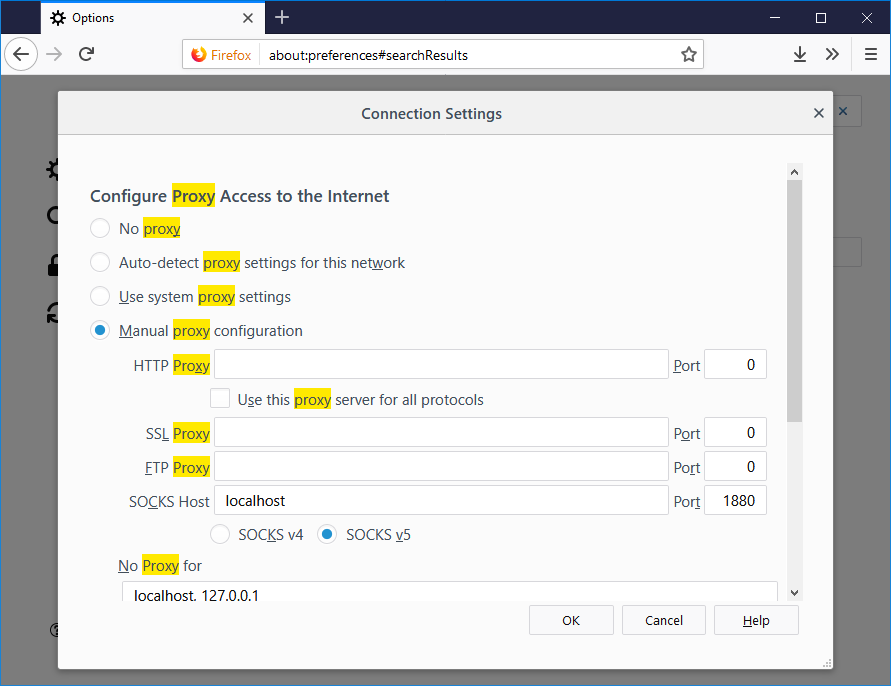The following script was taken from here
Added unifi-video support. Script uses letsencrypt to get the cert and automatically updates the UniFi and UniFi-Video Keystores.
Would be a good idea to check and make sure the the UniFi-Video cameras reconnect and still work after running script.
Installing Let’s Encrypt
Install Let’s Encrypt with the following
sudo apt install letsencrypt
And generate a cert for your domain with
sudo certbot certonly -d unifi.domain.com
Executing Script to Renew Certificate
Copy the script at the bottom of this post and put it in a file called gen-unifi-cert.sh
Run the script to insert the cert into the UniFi and UniFi-Video services.
sudo ./gen-unifi-cert.sh -e email@domain.com -d unifi.domain.com
You can run it with no or the -h argument to show the options and arguments to use.
./gen-unifi-cert.sh -h
Setup Cron Job
You should be able to add the following to a cronjob to auto renew the certificate. Replace path to script and domain name.
30 2 * * * /root/gen-unifi-cert.sh -r -d unifi.domain.com
UniFi SSL Cert Renew Script
#!/usr/bin/env bash
# Added support to do UniFi and UniFi controllers at the same time using the same cert.
# Original script from https://git.sosdg.org/brielle/lets-encrypt-scripts/raw/branch/master/gen-unifi-cert.sh
# More info here https://www.reddit.com/r/Ubiquiti/comments/43v23u/using_letsencrypt_with_the_unifi_controller/
# And here https://www.reddit.com/r/Ubiquiti/comments/43v23u/using_letsencrypt_with_the_unifi_controller/
# Modified script from here: https://github.com/FarsetLabs/letsencrypt-helper-scripts/blob/master/letsencrypt-unifi.sh
# Modified by: Brielle Bruns <bruns@2mbit.com>
# Download URL: https://source.sosdg.org/brielle/lets-encrypt-scripts
# Version: 1.7
# Last Changed: 09/26/2018
# 02/02/2016: Fixed some errors with key export/import, removed lame docker requirements
# 02/27/2016: More verbose progress report
# 03/08/2016: Add renew option, reformat code, command line options
# 03/24/2016: More sanity checking, embedding cert
# 10/23/2017: Apparently don't need the ace.jar parts, so disable them
# 02/04/2018: LE disabled tls-sni-01, so switch to just tls-sni, as certbot 0.22 and later automatically fall back to http/80 for auth
# 05/29/2018: Integrate patch from Donald Webster <fryfrog[at]gmail.com> to cleanup and improve tests
# 09/26/2018: Change from TLS to HTTP authenticator
# Location of LetsEncrypt binary we use. Leave unset if you want to let it find automatically
#LEBINARY="/usr/src/letsencrypt/certbot-auto"
PATH="/usr/local/sbin:/usr/local/bin:/usr/sbin:/usr/bin:/sbin:/bin"
function usage() {
echo "Usage: $0 -d <domain> [-e <email>] [-r] [-i]"
echo " -d <domain>: The domain name to use."
echo " -e <email>: Email address to use for certificate."
echo " -r: Renew domain."
echo " -i: Insert only, use to force insertion of certificate."
}
while getopts "hird:e:" opt; do
case $opt in
i) onlyinsert="yes";;
r) renew="yes";;
d) domains+=("$OPTARG");;
e) email="$OPTARG";;
h) usage
exit;;
esac
done
DEFAULTLEBINARY="/usr/bin/certbot /usr/bin/letsencrypt /usr/sbin/certbot
/usr/sbin/letsencrypt /usr/local/bin/certbot /usr/local/sbin/certbot
/usr/local/bin/letsencrypt /usr/local/sbin/letsencrypt
/usr/src/letsencrypt/certbot-auto /usr/src/letsencrypt/letsencrypt-auto
/usr/src/certbot/certbot-auto /usr/src/certbot/letsencrypt-auto
/usr/src/certbot-master/certbot-auto /usr/src/certbot-master/letsencrypt-auto"
if [[ ! -v LEBINARY ]]; then
for i in ${DEFAULTLEBINARY}; do
if [[ -x ${i} ]]; then
LEBINARY=${i}
echo "Found LetsEncrypt/Certbot binary at ${LEBINARY}"
break
fi
done
fi
# Command line options depending on New or Renew.
NEWCERT="--renew-by-default certonly"
RENEWCERT="-n renew"
# Check for required binaries
if [[ ! -x ${LEBINARY} ]]; then
echo "Error: LetsEncrypt binary not found in ${LEBINARY} !"
echo "You'll need to do one of the following:"
echo "1) Change LEBINARY variable in this script"
echo "2) Install LE manually or via your package manager and do #1"
echo "3) Use the included get-letsencrypt.sh script to install it"
exit 1
fi
if [[ ! -x $( which keytool ) ]]; then
echo "Error: Java keytool binary not found."
exit 1
fi
if [[ ! -x $( which openssl ) ]]; then
echo "Error: OpenSSL binary not found."
exit 1
fi
if [[ ! -z ${email} ]]; then
email="--email ${email}"
else
email=""
fi
shift $((OPTIND -1))
for val in "${domains[@]}"; do
DOMAINS="${DOMAINS} -d ${val} "
done
MAINDOMAIN=${domains[0]}
if [[ -z ${MAINDOMAIN} ]]; then
echo "Error: At least one -d argument is required"
usage
exit 1
fi
if [[ ${renew} == "yes" ]]; then
LEOPTIONS="${RENEWCERT}"
else
LEOPTIONS="${email} ${DOMAINS} ${NEWCERT}"
fi
#if [[ ${onlyinsert} != "yes" ]]; then
if [[ ${onlyinsert} == "yes" ]]; then
echo "Firing up standalone authenticator on TCP port 80 and requesting cert..."
${LEBINARY} --server https://acme-v01.api.letsencrypt.org/directory \
--agree-tos --standalone --preferred-challenges http ${LEOPTIONS}
fi
#if [[ ${onlyinsert} != "yes" ]] && md5sum -c "/etc/letsencrypt/live/${MAINDOMAIN}/cert.pem.md5" &>/dev/null; then
if [[ ${onlyinsert} == "yes" ]] && md5sum -c "/etc/letsencrypt/live/${MAINDOMAIN}/cert.pem.md5" &>/dev/null; then
echo "Cert has not changed, not updating controller."
exit 0
else
echo "Cert has changed or -i option was used, updating controller..."
TEMPFILE=$(mktemp)
CATEMPFILE=$(mktemp)
# Identrust cross-signed CA cert needed by the java keystore for import.
# Can get original here: https://www.identrust.com/certificates/trustid/root-download-x3.html
cat > "${CATEMPFILE}" <<'_EOF'
-----BEGIN CERTIFICATE-----
MIIDSjCCAjKgAwIBAgIQRK+wgNajJ7qJMDmGLvhAazANBgkqhkiG9w0BAQUFADA/
MSQwIgYDVQQKExtEaWdpdGFsIFNpZ25hdHVyZSBUcnVzdCBDby4xFzAVBgNVBAMT
DkRTVCBSb290IENBIFgzMB4XDTAwMDkzMDIxMTIxOVoXDTIxMDkzMDE0MDExNVow
PzEkMCIGA1UEChMbRGlnaXRhbCBTaWduYXR1cmUgVHJ1c3QgQ28uMRcwFQYDVQQD
Ew5EU1QgUm9vdCBDQSBYMzCCASIwDQYJKoZIhvcNAQEBBQADggEPADCCAQoCggEB
AN+v6ZdQCINXtMxiZfaQguzH0yxrMMpb7NnDfcdAwRgUi+DoM3ZJKuM/IUmTrE4O
rz5Iy2Xu/NMhD2XSKtkyj4zl93ewEnu1lcCJo6m67XMuegwGMoOifooUMM0RoOEq
OLl5CjH9UL2AZd+3UWODyOKIYepLYYHsUmu5ouJLGiifSKOeDNoJjj4XLh7dIN9b
xiqKqy69cK3FCxolkHRyxXtqqzTWMIn/5WgTe1QLyNau7Fqckh49ZLOMxt+/yUFw
7BZy1SbsOFU5Q9D8/RhcQPGX69Wam40dutolucbY38EVAjqr2m7xPi71XAicPNaD
aeQQmxkqtilX4+U9m5/wAl0CAwEAAaNCMEAwDwYDVR0TAQH/BAUwAwEB/zAOBgNV
HQ8BAf8EBAMCAQYwHQYDVR0OBBYEFMSnsaR7LHH62+FLkHX/xBVghYkQMA0GCSqG
SIb3DQEBBQUAA4IBAQCjGiybFwBcqR7uKGY3Or+Dxz9LwwmglSBd49lZRNI+DT69
ikugdB/OEIKcdBodfpga3csTS7MgROSR6cz8faXbauX+5v3gTt23ADq1cEmv8uXr
AvHRAosZy5Q6XkjEGB5YGV8eAlrwDPGxrancWYaLbumR9YbK+rlmM6pZW87ipxZz
R8srzJmwN0jP41ZL9c8PDHIyh8bwRLtTcm1D9SZImlJnt1ir/md2cXjbDaJWFBM5
JDGFoqgCWjBH4d1QB7wCCZAA62RjYJsWvIjJEubSfZGL+T0yjWW06XyxV3bqxbYo
Ob8VZRzI9neWagqNdwvYkQsEjgfbKbYK7p2CNTUQ
-----END CERTIFICATE-----
_EOF
md5sum "/etc/letsencrypt/live/${MAINDOMAIN}/cert.pem" > "/etc/letsencrypt/live/${MAINDOMAIN}/cert.pem.md5"
echo "Using openssl to prepare certificate..."
cat "/etc/letsencrypt/live/${MAINDOMAIN}/chain.pem" >> "${CATEMPFILE}"
openssl pkcs12 -export -passout pass:aircontrolenterprise \
-in "/etc/letsencrypt/live/${MAINDOMAIN}/cert.pem" \
-inkey "/etc/letsencrypt/live/${MAINDOMAIN}/privkey.pem" \
-out "${TEMPFILE}" -name unifi \
-CAfile "${CATEMPFILE}" -caname root
echo "Stopping Unifi and UniFi-Video controllers..."
systemctl stop unifi unifi-video
echo "Removing existing certificate from Unifi protected keystore..."
keytool -delete -alias unifi -keystore /usr/lib/unifi/data/keystore -deststorepass aircontrolenterprise
echo "Removing existing certificate from Unifi-Video protected keystore..."
keytool -delete -alias unifi -keystore /usr/lib/unifi-video/data/keystore -deststorepass ubiquiti
# following lines are needed for unifi-video
echo "Inserting certificate into Unifi keystore..."
keytool -trustcacerts -importkeystore \
-deststorepass aircontrolenterprise \
-destkeypass aircontrolenterprise \
-destkeystore /usr/lib/unifi/data/keystore \
-srckeystore "${TEMPFILE}" -srcstoretype PKCS12 \
-srcstorepass aircontrolenterprise \
-alias unifi
echo "Inserting certificate into Unifi-Video keystore..."
keytool -trustcacerts -importkeystore \
-deststorepass ubiquiti \
-destkeypass ubiquiti \
-destkeystore /usr/lib/unifi-video/data/keystore \
-srckeystore "${TEMPFILE}" -srcstoretype PKCS12 \
-srcstorepass aircontrolenterprise \
rm -f "${TEMPFILE}" "${CATEMPFILE}"
mv /usr/lib/unifi-video/data/ufv-truststore{,.old} # Delete old unifi-video keystore
sleep 5
echo "Starting Unifi and UniFi-Video controllers..."
systemctl start unifi unifi-video
echo "Done!"
fi

